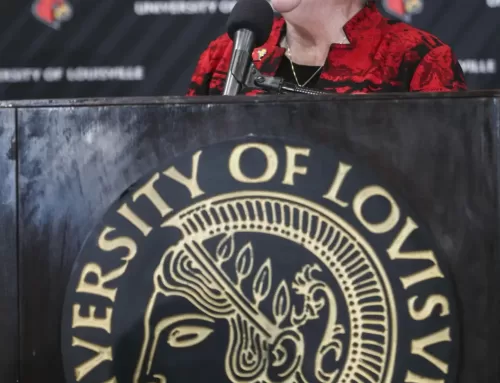By James El-Mallakh
Recently, University of Louisville President James Ramsey proposed a six percent tuition increase for the next fiscal year to the U of L Board of Trustees.
This change would bring the total cost of University of Louisville’s tuition close to $9,000 per year for in-state students. Out-of-state students would pay nearly $23,000 per academic year.
“We get no joy in increasing tuition,” said Ramsey. “We would prefer not to increase tuition. The fact of the matter and the reality is, we’ve been through 11 state budget cuts in 11 years.”
Ilya Chernyavskiy, a senior biology major, has felt the pinch of the tuition increases from years past.
“I had to pay 800 bucks a semester usually,” said Chernyavskiy. “After the increase, I had to pay a lot more, about 2,000 a semester. My scholarships went from covering it two-thirds to one-half.”
In light of rising costs to attend school, the question has become what U of L is doing to lessen the burden passed down to students.
Michael Curtin, vice president of finance at U of L, said his department assembled a chart of U of L’s business strategies, called the Seven Strategies, which are designed to save the university money. Among them are increasing creativity, building research, becoming more efficient and increasing fundraising.
“We have documented – since 1997 – over $135 million in cost savings or cost avoidances that we have implemented here at U of L,” said Curtin. “We’re saving a lot of money. We’re being real smart about how we spend our money.”
Chernyavskiy believes that these strategies, such as research, are achieving their goals of reducing tuition rates.
“They push research very heavily, which is one of the main reasons why our tuition is as low as it is,” said Chernyavskiy. “If you want to look at the actual cost, then go to Bellarmine…That is what the average student will be paying, which is two to three times more than the tuition for U of L and [the University of Kentucky]. They’re cheaper because it is backed by research grants.”
Kristen Goodlett, a freshman undecided major, said the university could be doing more to slow the increase of tuition.
“In all honesty, I think they could do a little bit more, as there are certain things any college could do to keep funds down,” said Goodlett.
Perhaps the biggest risk with an increase in tuition is it could affect the people who already struggle to pay for college.
“What we have seen is more of the lower socioeconomic class are having more difficulties and struggling to go to college,” said Curtin. “They’re having to take out more loans. What I hope isn’t happening is that we’re bypassing that segment of society and catering to folks that have more money. That’s not our intent at all. That’s why we have a lot of need-based scholarship aid here at U of L, so that that doesn’t happen.”
According to Ramsey, that risk is minimal.
“Tuition is really not the way to look at it,” said Ramsey. “Tuition is like the sticker price on a car… Very few students pay the sticker price. With federal financial aid, institutional financial aid, state financial aid, most students don’t really pay that amount.”



